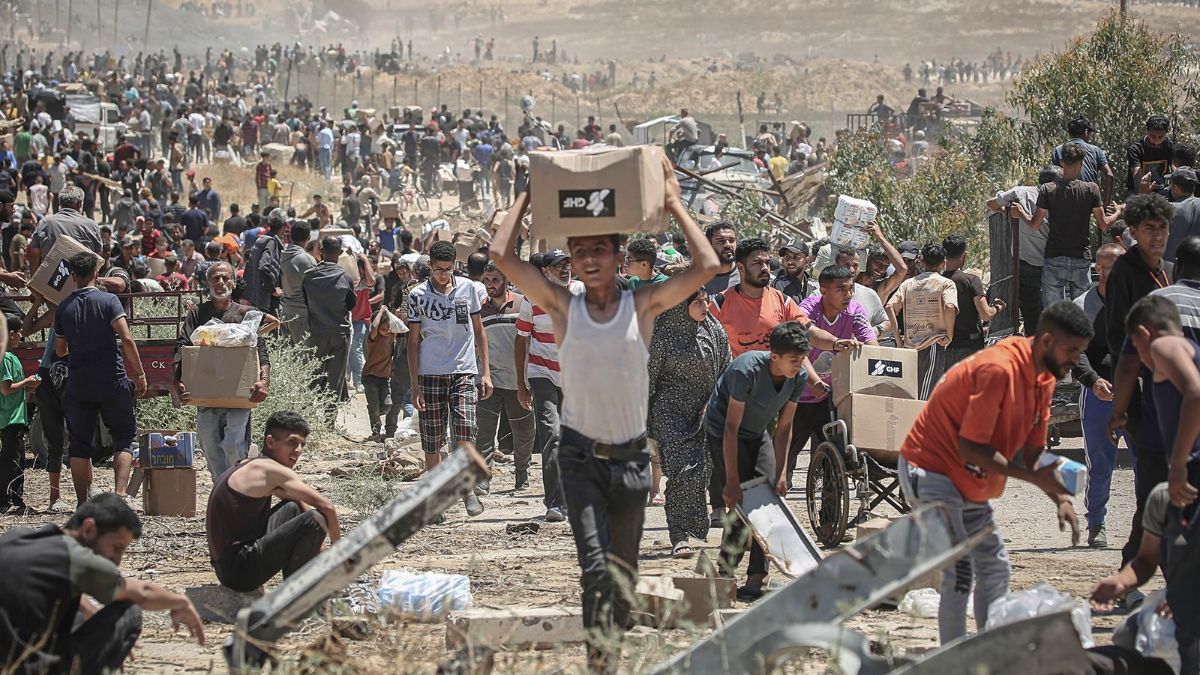The war in Gaza has taken a devastating toll on both Palestinians and Israelis. While Israel mourns its fallen soldiers and demands the return of hostages held by Hamas, Palestinians face mounting civilian casualties and worsening food insecurity. Delivering humanitarian aid in this volatile context is incredibly difficult—and made worse, according to many officials and experts, by Hamas’s manipulation of that aid.
Overview
The American Jewish Committee (AJC) acknowledges that Palestinian civilians need food and shelter. But they also warn that aid operations in Gaza are entangled in misinformation and exploitation. Hamas, they say, has co-opted aid for its own benefit—redirecting resources meant for the vulnerable to its fighters and political apparatus.
Meanwhile, the Gaza Humanitarian Foundation (GHF), a U.S.- and Israel-supported aid initiative launched in May 2025, is attempting to rewrite how aid is delivered. But GHF has been both praised for feeding millions and criticized for operating under military protection that has reportedly endangered aid seekers.
Current Situation
Israel has announced daily humanitarian pauses and opened humanitarian corridors across Gaza. On a recent day, 120 trucks entered during these pauses. Aid is now being delivered by air (IDF, Jordan, UAE) and land (via Egypt’s Kerem Shalom crossing), with the UAE constructing a desalination pipeline in cooperation with Israel.
But despite this activity, Gaza’s humanitarian crisis persists. Reports from the Hamas-run Gaza Ministry of Health claim hundreds have died near aid sites. Israeli officials and GHF leaders have disputed these numbers, calling them disinformation. GHF director Johnnie Moore says the foundation has delivered more than 51 million meals and operates independently under U.S. guidance. Still, intense battles and dense urban conditions blur the lines between civilian and combatant zones.
GHF’s Role
GHF was created to bypass Hamas by working directly with the IDF and private logistics teams. It now manages four “Secure Distribution Sites” and is planning to expand. Unlike traditional UN-led efforts, GHF avoids coordination with Hamas, whom the U.S. and Israel label a terrorist group.
This model has drawn criticism from some NGOs and UN agencies, who argue GHF undercuts established aid norms. Yet GHF argues its structure is the only way to prevent theft and terror financing. Moore says the organization operates in a complex environment “in proximity to something”—a reference to the unavoidable presence of dual-use infrastructure in densely populated Gaza.
Controversies
A Haaretz report alleged Israeli troops shot at unarmed civilians near a GHF aid site. The IDF denied the claims, calling them baseless and malicious. Netanyahu condemned the report as a blood libel, and the IDF launched an internal probe. Media figures initially reported high death tolls but were later forced to issue corrections due to reliance on unverified sources.
Whistleblowers, including U.S. veteran Anthony Aguilar, have detailed troubling scenes, accusing Israeli forces of excessive force and describing GHF as unintentionally contributing to civilian displacement. Hamas, according to GHF, has placed bounties on their workers and attacked a bus, killing eight aid staffers.
Hamas and Aid Theft
Hamas’s strategy of looting and taxing aid is well-documented. According to Israeli and U.S. intelligence, the group has diverted nearly a billion dollars since October 2023 to fund its war machine, paying operatives, buying weapons, and sustaining political control. By blocking or rerouting aid not under its control, Hamas starves both its enemies and its own people into submission.
Social media footage, including a video shared by Naftali Bennett, shows armed Hamas fighters atop stolen aid trucks. GHF and other sources claim Hamas harasses civilians attempting to access independent aid and uses violence to discourage participation in non-Hamas-approved relief systems.
Parallel Aid Systems
While GHF continues to operate, so do UN and NGO-led efforts. The Kerem Shalom crossing remains a major conduit, with over 1,400 trucks entering Gaza in just three weeks. But looting, fuel shortages, and Hamas’s interference complicate aid delivery. According to Israeli officials, 950 trucks remain uncollected inside Gaza because local NGOs cannot safely distribute them.
GHF, despite limitations, is seen by its backers as a more controlled, secure method of delivery. Critics, however, say it politicizes aid and risks deepening division. For now, both systems are operating—but only together can they hope to meet Gaza’s overwhelming needs.
FAQs
What is the Gaza Humanitarian Foundation?
GHF is a U.S.- and Israel-backed group delivering aid in Gaza.
Is Hamas stealing aid?
Yes, Hamas reportedly taxes and seizes aid to fund its operations.
How is aid delivered in Gaza now?
Through UN channels and GHF’s secure, military-backed sites.
Has GHF faced violence?
Yes, 12 local staff were killed; others attacked by Hamas.
Is famine happening in Gaza?
Yes, UN experts confirm the worst-case famine scenario is unfolding.












